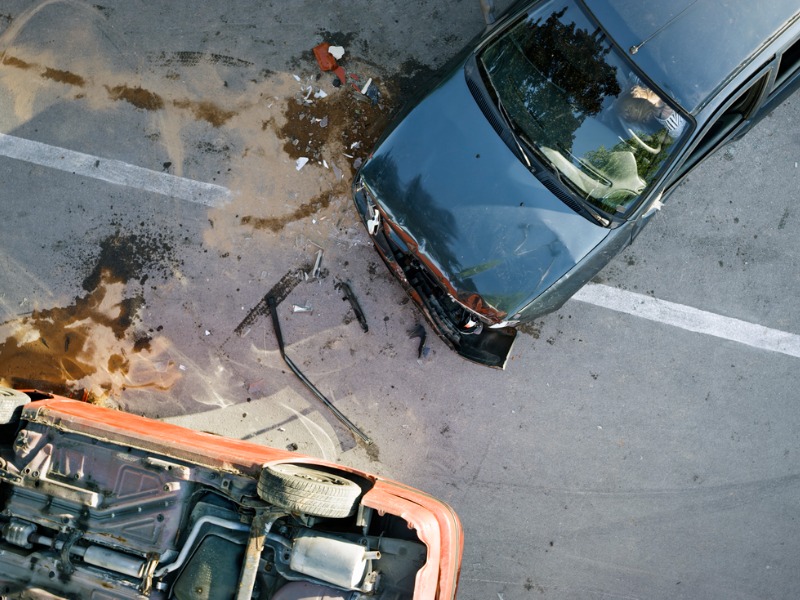Regulators address Alberta DCPD misconceptions, brokers contest public auto

Two years into Alberta’s new direct compensation for property damage (DCPD) regime, regulators are still clearing up misunderstandings about when and how coverage gets triggered, regulators said at the Insurance Brokers Association of Alberta Convention 2024 in Banff last week.
But in the middle of the discussion with the regulators about DCPD, the brokers in the audience unexpectedly made their stance clear on public auto in a Q&A portion of the “Talk with Regulators” session.
In 2022, amendments to Alberta’s DCPD framework made it so drivers who are not at-fault for an auto accident will claim from their own insurer for damage to their vehicle and its contents, rather than claiming from the at-fault driver’s insurance.
Laurie Balfour, executive director at Alberta’s Automobile Insurance Rate Board, talked about marrying future auto reform initiatives — one of which is now being contemplated by Alberta’s United Conservative Party Government — with education for those who communicate directly with clients.
“Somebody came up to me at a conference I spoke out a couple weeks ago, [and said], ‘My client was hit by an uninsured driver, how do they access DCPD?’” she said. “If you’ve been for DCPD training, you know the answer: they don’t.
“There’s no DCPD unless there’s two vehicles; both have to be insured in order to trigger DCPD. But there’s a lot of insurance professionals out there yet that still don’t know that.”
Balfour says she will be advocating to the government for mandatory training on new reform.
“We really need to make sure that this is really well understood by everyone who’s has a touchpoint with the consumer, so that we can make this as simple as possible for consumers,” she said. “There’s nothing worse than the consumer not understanding what they’re buying, not getting the price they think they should be getting, and then losing faith and confidence in the system,” she said, which garnered a round of applause.
David Sorenson, deputy superintendent of insurance for the Government of Alberta, addressed another common misconception when it comes to DCPD.
“We have heard from many brokers…about DCPD being no fault,” he said. “DCPD is not no-fault. DCPD is coverage that basically replaces the other insurance with your insurance. That’s all it does. It just changes who pays.”
“We also hear from some saying, ‘Okay, well, you know, I have DCPD. How do I access that if I’m at fault?’” he said. ““Fault is a key part of it. Fault means you get paid or you don’t get paid.”
In a situation in which a driver is at-fault, they would claim from their own collision coverage for damage to their own vehicle, according to the Government of Alberta.
What brokers make of public auto
In the heat of the moment, during discussion about auto reforms and DCPD, one broker took aim at public auto using a recent client example.
He told the story of how one of his clients had to pay out-of-pocket for DCPD coverage after it was hit by a driver who was publicly insured.
Sorenson responded, explaining the prerequisites for accessing DCPD coverage in Alberta.
“You need the not-at-fault driver to have a policy with an Alberta insurance company. You need the at-fault or at least one at-fault driver to have an insurance policy with an Alberta insurance company. And you also can have [coverage with] another insurance company, if that insurance company has said, ‘I will be bound by DCPD rules,’” he said.
A handful of extra-provincial public insurers and/or regional municipalities that self-insure, both in Canada and the U.S., have agreed to Alberta’s DCPD rules, Sorenson explained.
But in this case, the public insurer had not been bound by DCPD rules.
The broker responded: “It’s definitely a challenge when dealing with a public insurer when it takes them five months to say, ‘Yeah, we’re at fault’ when the police report clearly states that their party rammed our insured’s parked vehicle. That’s public insurers for you, right?” he said.
The room, packed with Alberta brokers, erupted with claps in agreement.
The discussion highlights the friction that’s going around in Alberta about public auto.
Though the government has not declared its official decision on long-term auto insurance reform, a recently commissioned report by Oliver Wyman found a B.C. or Manitoba public auto model would garner the most savings for Alberta drivers.
Private insurers dispute the report’s actuarial assumptions and methodology, as well as the potential benefits of reforming away from the private system.
Earlier in the discussion, Balfour said brokers will likely have an opportunity to express their concerns with government.
“There may be opportunities for the policy folks to meet with some brokers to find out what are the challenging points there, to understand what the concerns are on delivery of the product,” she said. “Because let’s face it: the government designs the product, I regulate the rates of the product, David [Sorenson] regulates the market conduct of the product, you have to sell the product, you have to deliver that product to the consumer. You have to explain it to the consumer, ‘What does this change mean for me?’
“The rate board and the government, I expect them to be taking a larger role in education as well to implement that.”
Feature image by iStock.com/simonkr







